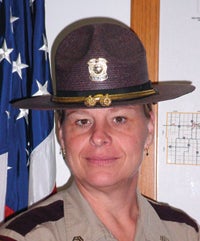When do children stop using booster seats?
Published 9:32 am Monday, September 30, 2013
Column: Ask a Trooper, by Jacalyn Sticha
Question: When can my child get out of a booster? I hear so many things.
Answer: The law states (Minnesota State Statutes 169.685): Every motor vehicle operator, when transporting a child who is both under the age of 8 and shorter than 4 feet 9 inches … shall equip and install … according to the manufacturer’s instructions, a child passenger restraint system meeting federal motor vehicle safety standards.”
Booster seats help fit our children into the adult lap-and-shoulder belt system after they have outgrown internal harness child restraints. Children should remain in boosters, minimally, until age 8 and 4 feet 9 inches. This is, often, a neglected final stage in child passenger safety.
Vitally, many children over age 8 and 4 feet 9 inches need to remain in a booster. A child should not graduate to the adult seat belt system until their knees bend over the edge of the vehicle seat, lower leg going straight down, and their rear-end against the seat back. They need to maintain this position, without sliding their hips down, or the adult belt may ride up on soft tissue (abdomen) or cross their neck. Never tuck the shoulder belts away, or wear loosely, with a booster or the vehicle’s belt system, it destroys the effectiveness greatly.
The manufacturer’s instructions need to be followed precisely; ignoring them can be extremely injurious. Using a child restraint system in conflict with the manufacturer’s instructions is a violation of the law. Instructions are not a quick read, they must be studied, practiced and then applied correctly; increasing a child’s safety exponentially. The vehicle’s manual also needs to be at the table for this important job.
Finally, a CRS must meet federal motor vehicle safety standards, and if bought in at reputable retailer they do. Used CRSs need reliable histories and confirmation (with the instructions and manufacturer) that the CRS is still set up correctly, has all the parts and is neither damaged nor worn; do not purchase child restraints at garage sales or second hand stores. Destroy any CRS that has been in an injury crash, with or without a child in it, or if it was immediate to the point of impact, in any crash.
For more information about booster or pre-booster child restraint systems, installation instructional video, and to contact a certified child passenger safety technicians and instructors go to: buckleupkids.mn.gov or for the full law go to www.revisor.mn.gov.
Dim those bright lights
Question: What are the rules regarding using your bright front headlights while on the interstate?
Answer: On a two-lane or divided roadway a person needs to dim their bright lights for oncoming traffic within 1,000 feet and additionally they are to be dimmed within 200 feet when you are following another vehicle. This would also apply to traffic on frontage roads and roadways which are adjacent or have a common boundary, edge or are abutting.
169.61 Subv.(b) states: “When the driver of a vehicle approaches a vehicle within 1,000 feet, such driver shall use a distribution of light, or composite beam, so aimed that the glaring rays are not projected into the eyes of the oncoming driver.”
Many drive with their bright lights at night, without dimming, because they can see better. This is illegal and unsafe for all drivers. If it is the only option for the driver, because vision would be too poor to drive without brights on, they should not be driving at night.
We do recommend, especially as we age, to have eyeglass prescription and eyes checked yearly. Often, new lenses and keeping up with our changing eyes can improve our experience with night and general driving.
Jacalyn Sticha is a sergeant with the Minnesota State Patrol.


